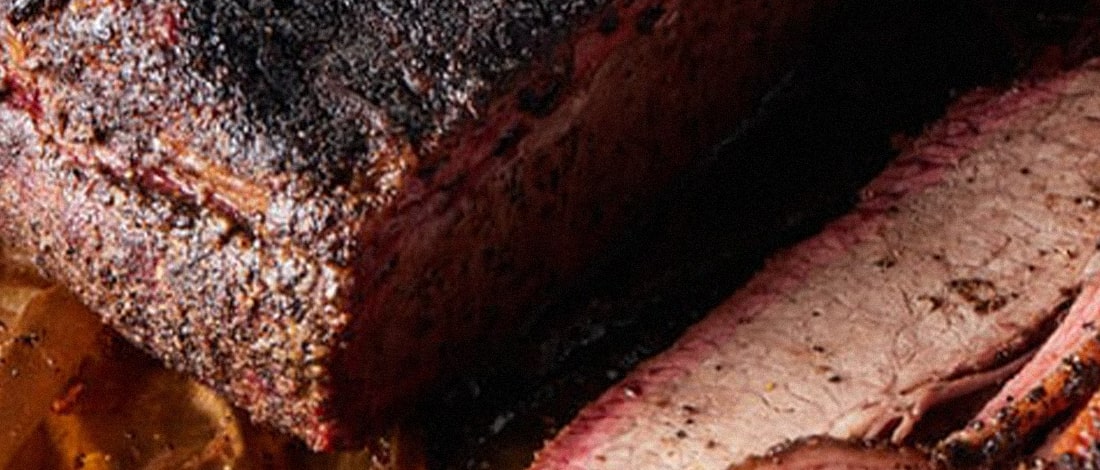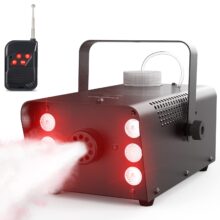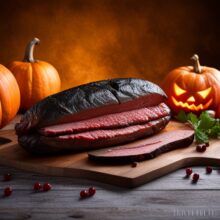How to Wrap a Brisket For a Barbecue

If you’re trying to figure out how to wrap a brisket for a barbecue, you have many options. You can use Butcher paper, Parchment paper, or even Aluminum foil. Regardless of your choice, here are some tips for getting the best results. Once you’ve wrapped the brisket, you can add a sauce and a side dish to complement it.
Butcher paper
When wrapping brisket, you need to make sure to wrap it tightly and evenly. The best way to do this is to use a thick piece of butcher paper that is at least 5 times as long as your meat. You want to position the brisket presentation side up, and fold the bottom edge up so that it fits snugly around the meat. Fold the sides up as well, and pull tightly to create a seal.
Another benefit of using butcher paper is that it creates a moisture band around the meat, which helps retain moisture and prevent it from drying out. However, you should note that it will take longer to cook brisket than it would if you used foil. As long as you have a thermometer, you can cook your brisket for a shorter time by wrapping it with butcher paper.
Smoking brisket is an art form, so it is important to learn how to smoke it correctly. Many professional cooks use butcher paper for their meat, and they have an exceptional knack for it. However, for beginners, pink butcher paper can be tricky to handle. As you can see, butcher paper absorbs excess grease from your brisket and creates a moisture layer around it, helping it to conduct heat and smoke. This allows more smoke to pass through, which gives your brisket more flavor.
While it is important to wrap a brisket tightly, you don’t want to overdo it. Wrapping the meat will prevent moisture from evaporating, which slows down the cooking process. In addition to preventing moisture from evaporating, butcher paper also prevents air from entering the meat.
It is important to wrap the brisket tightly, as loose butcher paper will allow moisture to escape and can cause the brisket to stall. The fat side of the paper should be facing up and the bottom folded over the brisket. Wrapping your brisket properly can help prevent the meat from drying out, making it even more tender and delicious.
Proper wrapping is an important step in preparing your beef brisket, and the time of wrapping is critical to its success. It prevents evaporation and deposition, which means that your brisket will cook more slowly. The right wrapping technique ensures proper stall operation.
Parchment paper
Whenever you want to wrap a brisket, you can do so using parchment paper. This paper will protect your meat during the cooking process and makes cleanup easier. When wrapping your brisket with parchment paper, it is important to use several layers. The first layer should be about four times the length of your brisket. Place the brisket on the top of the paper, with its flat side facing up. Next, fold over the top of the paper and then tuck it under the brisket tightly.
After reaching the perfect temperature, you can wrap the brisket in parchment paper or butcher paper. This will help lock the heat in and keep the meat moist during the last part of the cooking process. Another advantage of using parchment paper is that it is not likely to catch on fire. In addition, it has a silicon coating that will prevent it from catching fire.
Another benefit of using parchment paper is its versatility. It can be used for a variety of baking methods and is reusable. It helps to retain moisture in meat, and it can also help to regulate the temperature. In this way, you can easily prepare a meal and eat it quickly.
You can also wrap your brisket with a clean towel. You should use two layers to keep the meat moist, and this will prevent it from drying out. The brisket can be left wrapped until serving time. Using freezer paper is another option, but it is not a good choice for briskets. If you’re not sure about whether to wrap it with parchment paper, it is important to know its internal temperature.
Another advantage of wrapping your brisket with parchment paper is that it has a high temperature-resistant coating. This will make your meat tender and juicy, so you can get it done faster! This way, you’ll also avoid drying out the meat, which is the goal when wrapping a brisket. The paper also absorbs the meat’s grease and helps to create a moisture layer, which conducts heat.
Another good option for wrapping a brisket is butcher paper. Butcher paper is much denser than parchment paper, which allows for some evaporation and keeps the bark moist without becoming soggy. The paper is also stronger than parchment paper, making it easier to handle. You can also use aluminum foil, which was originally designed for wrapping smoked meats. It is easy to work with and allows a little smoke to escape.
Aluminum foil
There are several factors to consider when determining when to wrap brisket in aluminum foil. Ideally, you’ll wrap it eight to ten hours before the stall is scheduled to begin. Aluminum foil is a great choice for this purpose, since it’s a common household item.
While it can be tempting to use butcher paper to wrap the brisket, you should also consider the fact that it won’t be as tightly clingy as aluminum foil. While butcher paper is a great alternative, it will take a longer time to cook, and it’s not a guaranteed method. For best results, use heavy-duty aluminum foil, as this will prevent tearing. The best butcher paper to use is untreated, and you’ll need two large sheets.
Brisket wrapped in foil keeps its juices, which means it comes out very moist. You can use the liquid from the foil to make BBQ sauce or drizzle it over the brisket after it’s been sliced. It’s also a good idea to remove the wrap once it’s finished to get a crisper bark.
Brisket wrapped in aluminum foil is moist when compared to its “naked” counterpart. Wrapping the meat will also prevent deposition and evaporation. Properly wrapping the meat will ensure the proper operation of your stall. So, wrap your brisket in aluminum foil at the right time to ensure maximum results.
While wrapping your brisket in aluminum foil should not compromise the taste or texture of the meat, it will allow more smoke to pass through the brisket and reduce the cooking time. If you’re cooking it for a barbecue, use butcher paper or parchment paper, but be sure to use nontoxic, FDA-approved paper for it.
Wrapping the brisket in aluminum foil will create a tight seal, which will prevent the bark from becoming too moist. Also, it will allow the bark to develop a strong, beefy flavor. If you want a less dense bark, you may want to use parchment paper instead of aluminum foil.
Many pitmasters wrap their briskets before cooking. This prevents the meat from drying out and stalling during the final stage of cooking.
Texas crutch technique
Whether you’re looking to reduce cooking time or keep your brisket moist, the Texas crutch technique is a great option. It encases the meat in aluminum foil and helps to trap moisture and prevent it from evaporating. It also helps prevent the meat from stalling, which can cause it to cook more slowly and end up in a hangry animal.
The Texas crutch technique for wrapping bristeket can be done with many types of meat. In this technique, a brisket is wrapped in butcher paper, aluminum foil, or a pan. It should be wrapped at about 165 degrees Fahrenheit, which will keep it moist. However, the wrapping technique may change the texture or bark of the meat.
One of the benefits of wrapping a brisket is that it seals in the flavorful natural juices of the brisket. This allows the meat to braises in its own juices. This method also has the advantage of adding a deeper smoky flavor to the meat. The brisket will absorb this smoky flavor all the way to the stall zone. Initially, this technique originated in the BBQ competition world. Today, it’s common in tropical regions and barbecue competitions.
This method is also great for briskets that are partially cooked. If you plan to wrap the brisket with aluminum foil, you’ll need two pieces of heavy duty aluminum foil. The foil should be long enough to cover the meat and form a tight seal. This will help the meat cook faster. However, it’s best to remove the foil during the last hour or so of cooking, if you want crispy bark.
Another advantage of using the Texas crutch technique for wrapping bri spit roast is that it allows you to cook the brisket much faster. The meat will be moist and tender, and you’ll save time, fuel, and money. It’s an excellent option if you want to get a brisket done in a few hours.
The ideal time to wrap brisket is when its internal temperature reaches 150 to 160 degrees. This will allow it to power through the stall much more efficiently.
Read more great BBQ articles at Bob's BBQ Tips
Did you miss our previous article…
https://notoriousbob.net/?p=2083



